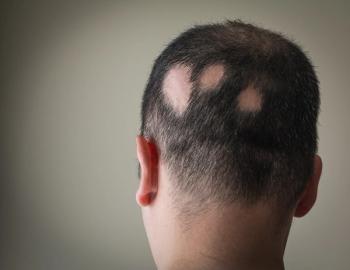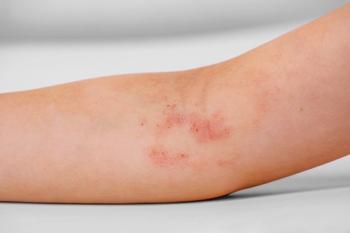
When hemangioma indicates PHACE risk
Not all infants with infantile hemangiomas are at risk of PHACE (posterior fossa malformations, hemangioma, arterial anomalies, cardiac defects, eye anomalies) syndrome, but some characteristics may indicate an increased risk.
Previous research found that the incidence of PHACE (posterior fossa malformations, hemangioma, arterial anomalies, cardiac defects, eye anomalies) syndrome was 31% in children who had infantile hemangioma. A
Investigators ran a multicenter, retrospective cohort study that examined all children with a facial, head, and/or neck infantile hemangioma were also evaluated for PHACE syndrome from August 2009 to December 2014 at 13 pediatric dermatology referral centers in North America. The primary outcome for the investigators was the presence or absence of PHACE syndrome. Data collected from the participants included diagnostic procedures and results, type and number of associated anomalies, age at diagnosis, sex, patterns of infantile hemangioma presentation, which included size, segment location, and depth.
The analysis had 238 patients with an average age of 2.96 months. Of those 238 children, 106 were found to meet the criteria for definite (n = 98) or possible (n = 8) PHACE syndrome. A model using stepwise linear regression showed that the involvement of 3 or more locations (odds ratio [OR], 17.96; 95% CI, 6.10-52.85) and a surface area of 25 cm2 or greater (OR 2.99; 95% CI, 1.49-6.02) were statistically significant risk factors for PHACE syndrome. A lower risk of PHACE syndrome was linked to involvement of segment S2 (OR, 0.38; 95% CI, 0.16-0.91) and parotid gland (OR, 0.39; 95% CI, 0.18-0.85).
The investigators concluded that their findings provided further proof of what was linked to a higher risk of PHACE syndrome: multiple sites as well as large surface area, versus was linked to a lower risk, such as S2 or parotid infantile hemangioma. They did note that further study was needed to determine whether race and ethnicity were linked to PHACE syndrome risks. Investigators hope that their findings can assist clinicians in counseling the families of infants with large head and neck infantile hemangiomas.
Reference
1. Cotton C, Ahluwalia J, Balkin D, et al. Association of demographic factors and infantile hemangioma characteristics with risk of PHACE syndrome. JAMA Dermatol. June 16, 2021. Epub ahead of print. doi:10.1001/jamadermatol.2021.1901
Newsletter
Access practical, evidence-based guidance to support better care for our youngest patients. Join our email list for the latest clinical updates.














